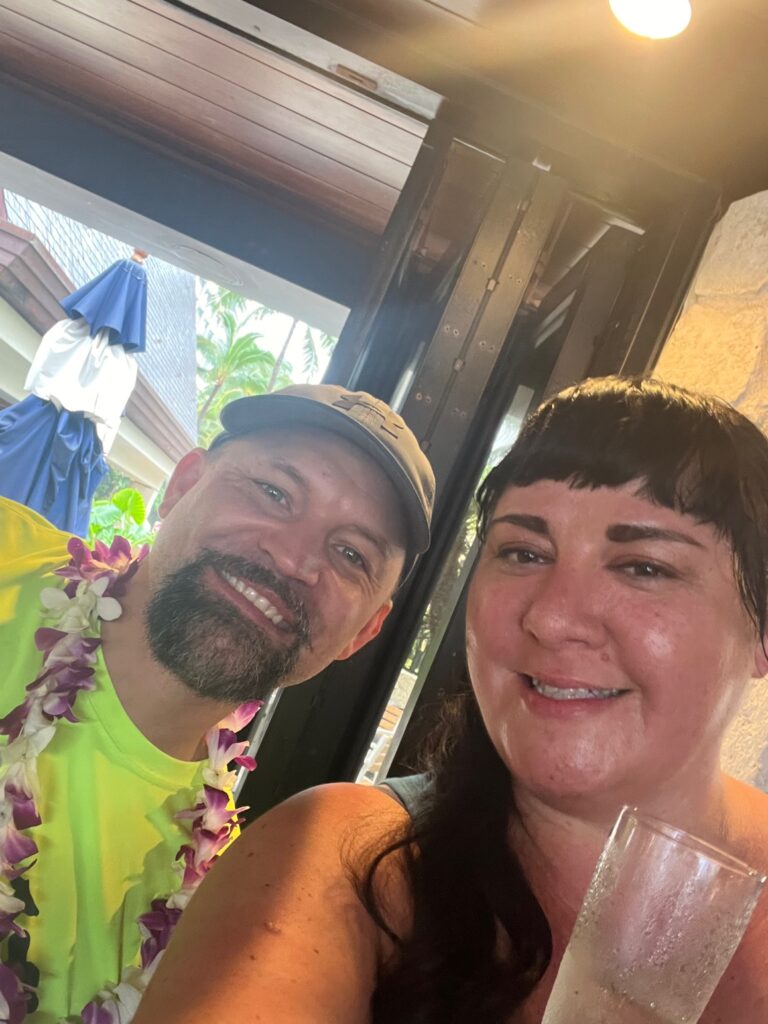
On a recent trip to Oahu, the unexpected happened: it poured rain. Not intermittent bursts of tropical rain, and not an isolated warm sprinkles amid a sunny afternoon, but sky-choking, cloud-cracking, Hollywood rain. The postcard view of Diamond Head from our hotel room was entirely obscured by milky gray skies. The storming ocean churned, devoid of surfers. When I peeked out the blinds for a hopeful glimpse of sunshine, I was greeted instead by three bedraggled, drenched seagulls that huddled on my lanai table for their own safety.
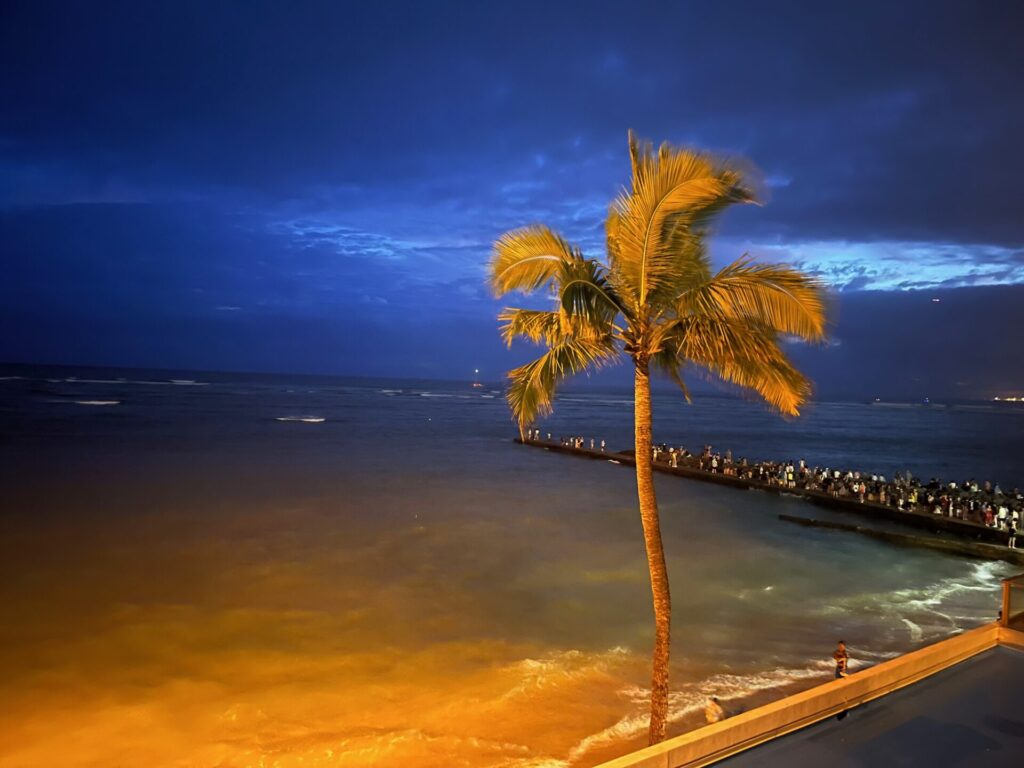
Here’s what I learned: when it rains in Hawaii, it pours Aloha. The five straight days of rain that Oahu experienced was atypical, as the rainy season is typically November to March. But Hawaiians are actually very reverent about rainstorms. Several locals shared that Hawaiians have some 200 words for rain depending on what kind it is. They believe rains are a gift from their ancestors. And the rain was indeed a blessing; instead of my usual routine of pool time and beachy strolls, I found new and wonderful ways to pass the time in Honolulu.

My first stop: Iolani Palace. Full disclosure, I’ve put off this visit for years, because when we Alaskans travel somewhere warm, it’s so dang hard to turn from the sun. With no end to the rain in sight, this particular Hawaiian trip afforded the perfect opportunity to visit this iconic royal residence.
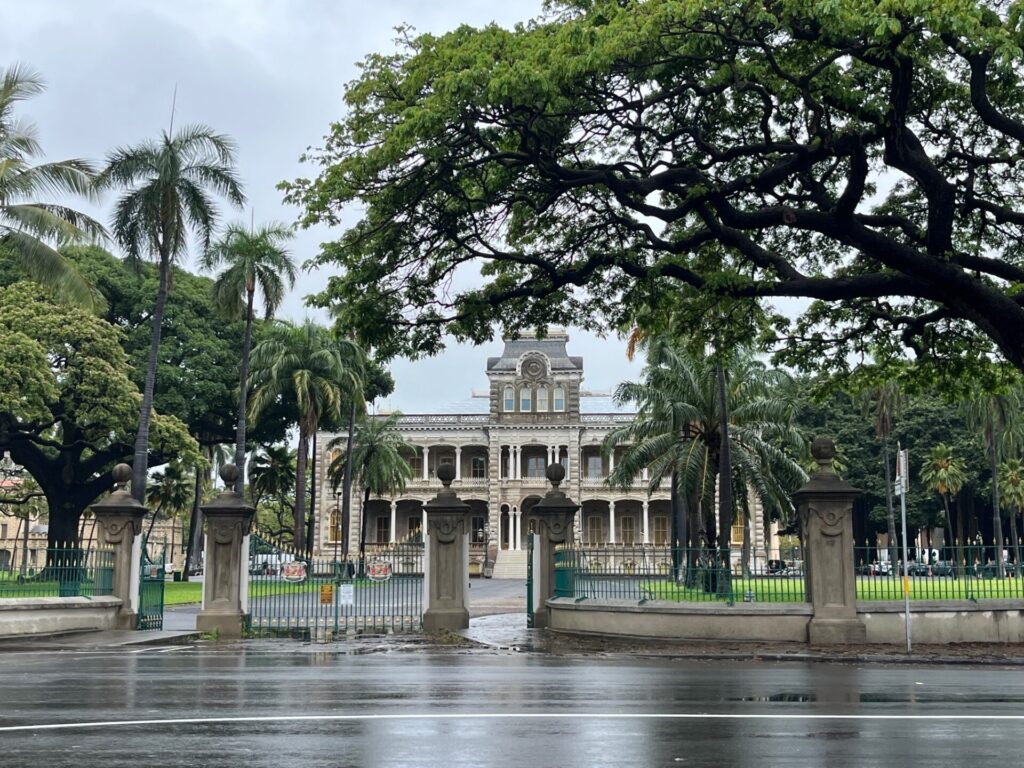
The Iolani Palace we see today was built by King Kalakaua in 1882, on grounds that had featured monarchy dwellings for decades. It’s time as the official royal residence was brief but special. It was a thriving gathering place, royal home, and center for culture and politics until 1893, with the overthrow of the monarchy.

The palace had various uses over the following years, including serving as the Capitol for almost 80 years. It was established it as a national Historic Landmark in 1962 and was reborn as a cultural tourism destination thanks to a painstaking restoration campaign in the 1970s that saw it reopen as a museum in 1978. Iolani is the only official royal residence in the United States.

I signed up for the docent-led tour, which began on a covered outdoor portico with impressive stone columns and orange and brown tile work. Rain battered the palms as we slipped paper booties over our shoes – a preventative requirement to protect the palace’s floors and carpets. About 20 people from across the U.S. (and a few Hawaiians) made up our group.
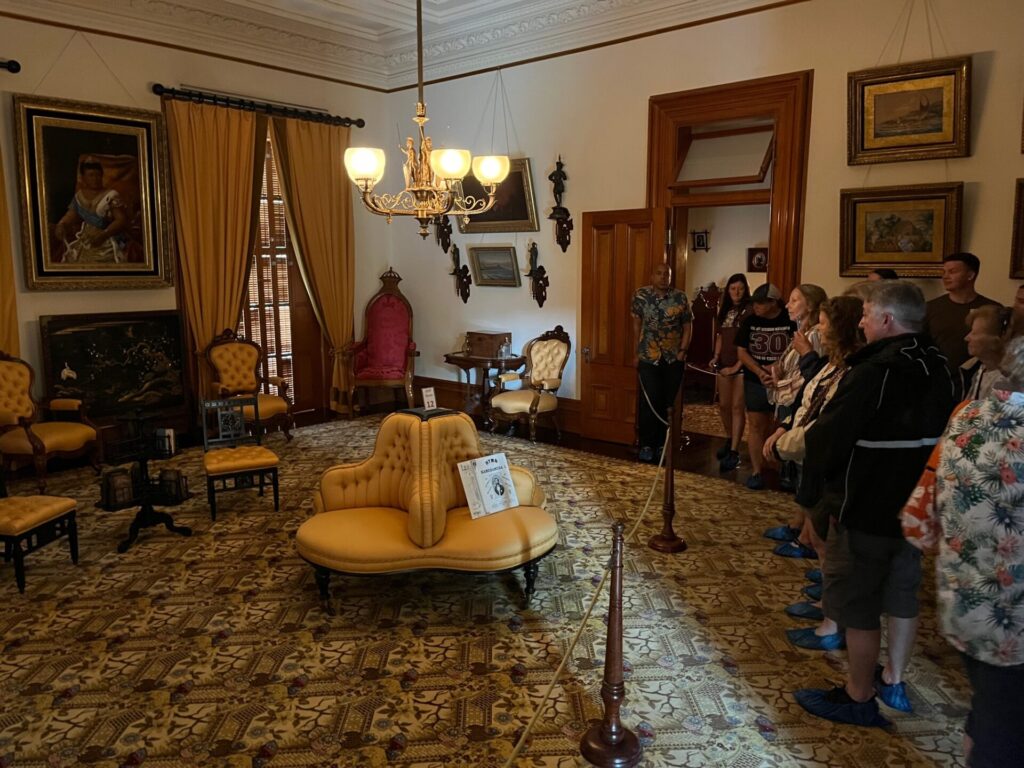
Throughout the tour, which lasted about an hour and a half, our well-versed guide slowly led us through significant rooms that have been slowly restored, with original furniture recovered and installed whenever possible. The interior reflected Victorian design sensibilities blended with distinctly Hawaiian décor and materials, such as Koa wood, and ubiquitous royal staffs called kahilis, long poles decorated on one end with clusters of feather plumes.
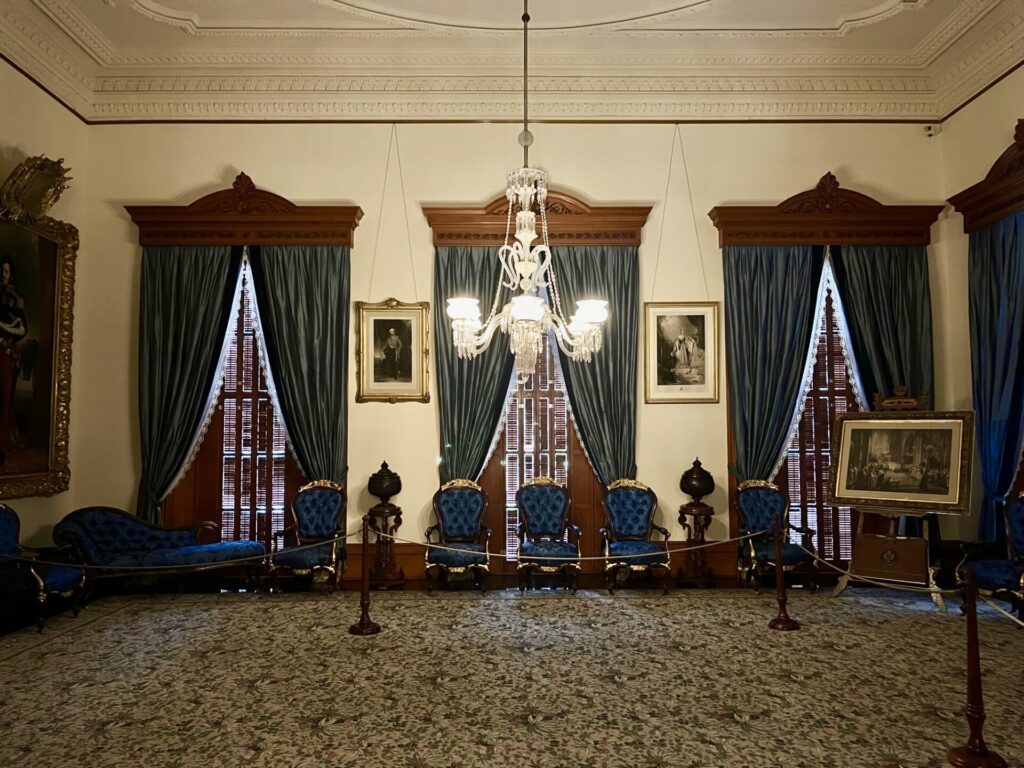
As the tour wound through the ground floor, we saw the great hall, the formal dining room, and the Blue Room. Our guide explained the people behind ancient portraits adorning the walls, pointed out distinct and significant décor, and also shared a tragic story about the Blue Room.

A group of U.S. businessmen had laid the groundwork for the coup that would eventually result in Queen Lili’uokalani’s forced abdication. In a last effort, in the Blue Room, she presented draft constitutional amendments that would restore voting rights to many native Hawaiians. Her effort failed, and according to our guide, she likely knew in that moment by the reaction of her peers that 1,000 years of Hawaiian independence was over.

During our palace tour, we also visited what is called the Imprisonment Room. Here, Queen Lili’uokalani was held for many months after her arrest. The room contains a quilt that the queen herself and her ladies painstakingly worked on during this time. Others added to it and it became a cultural tapestry of her legacy.

Other rooms visited on the palace tour included private bedrooms, the family’s beloved music room, and the majestic throne room, a sight of many legendary parties and celebrations. If you visit, leave time to visit the basement area, which has been restored to a museum featuring collections of family jewelry and shields, monarchy regalia, and historical documents and photographs. The palace is open Tuesday to Saturday from 9 a.m. to 4 p.m. and tickets can be purchased online.

After visiting Iolani, I popped open my umbrella and walked about 15 minutes into Chinatown where I hit up the well-known Honolulu dining landmark, The Pig and the Lady. I arrived without a reservation and the restaurant was packed but I was seated quickly at the bar. The Pig and Lady is a mainstay on foodie rosters of top Honolulu eateries, known for its modern Vietnamese cuisine.

Tortured by the delicious feast of menu options, I landed on the Bun Cha Hanoi. Billed as one of Hanoi’s most famous vermicelli noodle dishes, it came with a hot bowl of hot pho broth, spiced lemongrass grilled pork patties, pickled papaya marinated in a light nuoc cham, with a side of light and addictive crispy crab and pork rolls, chopped fresh garlic and chili, soft lettuce leaves, a pile of aromatic herbs.
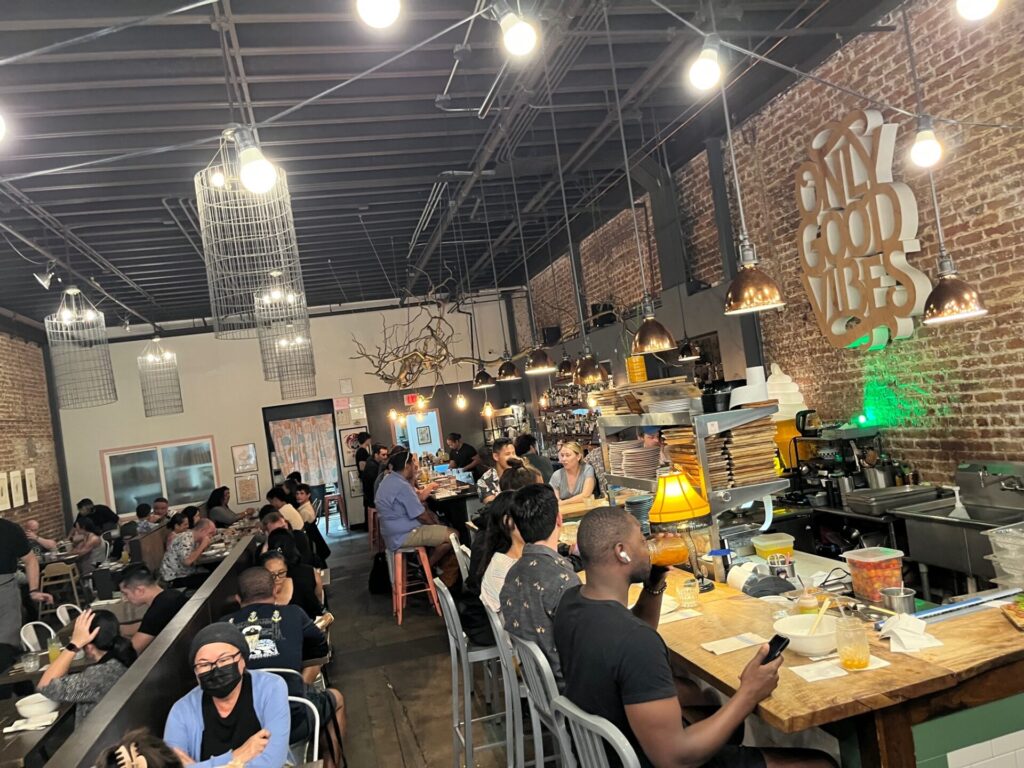
Chinatown is a picturesque little corner of downtown Honolulu with its brick buildings and harbor-side setting. Had it not been pouring, I would have enjoyed wandering. Instead I ducked into an Irish pub called Black Shamrock to wait out peaking Uber fares. Formerly known as O’Toole’s, an Irish pub has operated here for some time, and it was a comfortable and friendly watering hole to wait out a rain surge and sip a pint of Hana Koa Brewing Ho-Yah! West Coast IPA. All told, my downtown day was a nice change from bustling Waikiki.
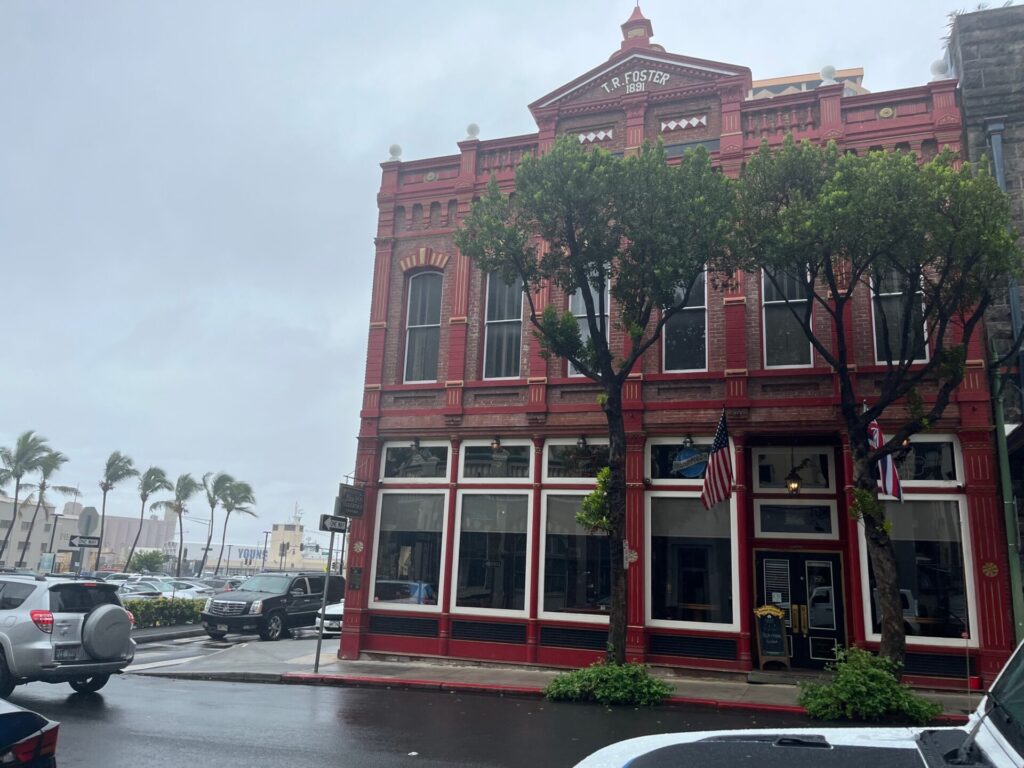
Another new restaurant I sampled this trip was The Pupu House. Their fun, diverse menu is populated with creative shareable plates, some recognizable for also being featured on the menu of its long-standing sister restaurant, Uncle Bo’s Pupu’s. The vibe here is trendy, cool, and basic in the best way, with tiki-bar décor and delightful tropical kitsch.
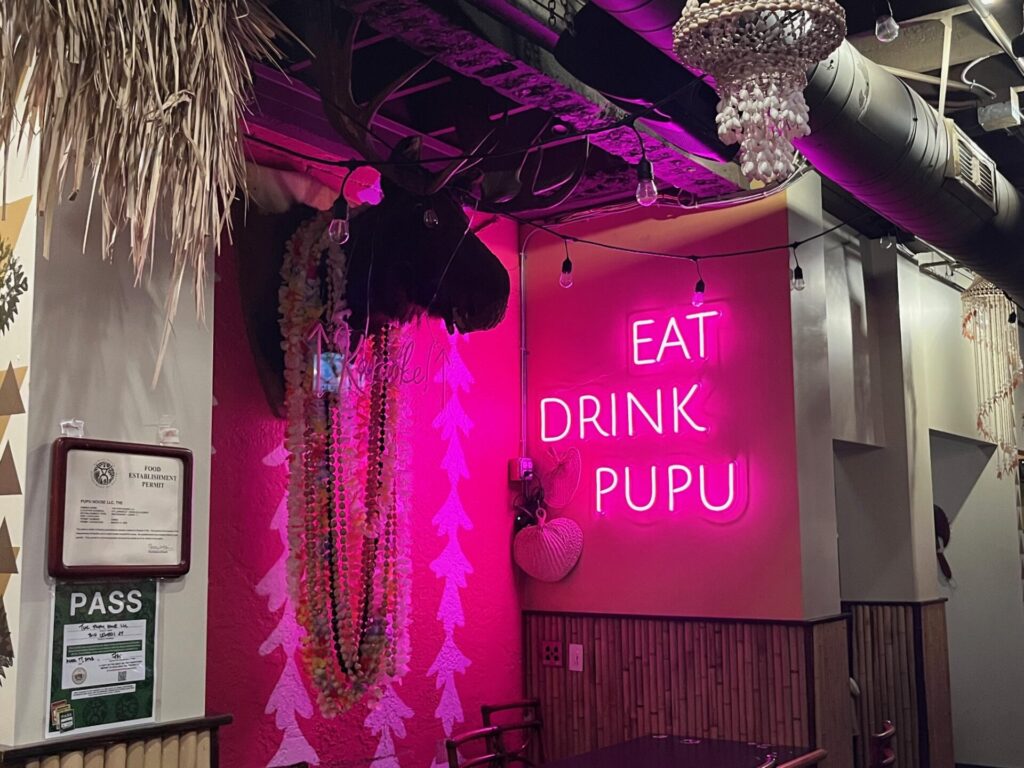
Pupu House is conveniently located just off the main drag, Kalakaua Avenue, and I found service to be fast and friendly, with an alternating entertainment roster of musicians and DJs.

We tried the Kalua pig fried rice, a carbohydrate dome of salty and savory pork, garlic grilled onions, and wok-fried rice that perfectly paired crunchy and fluffy textures.
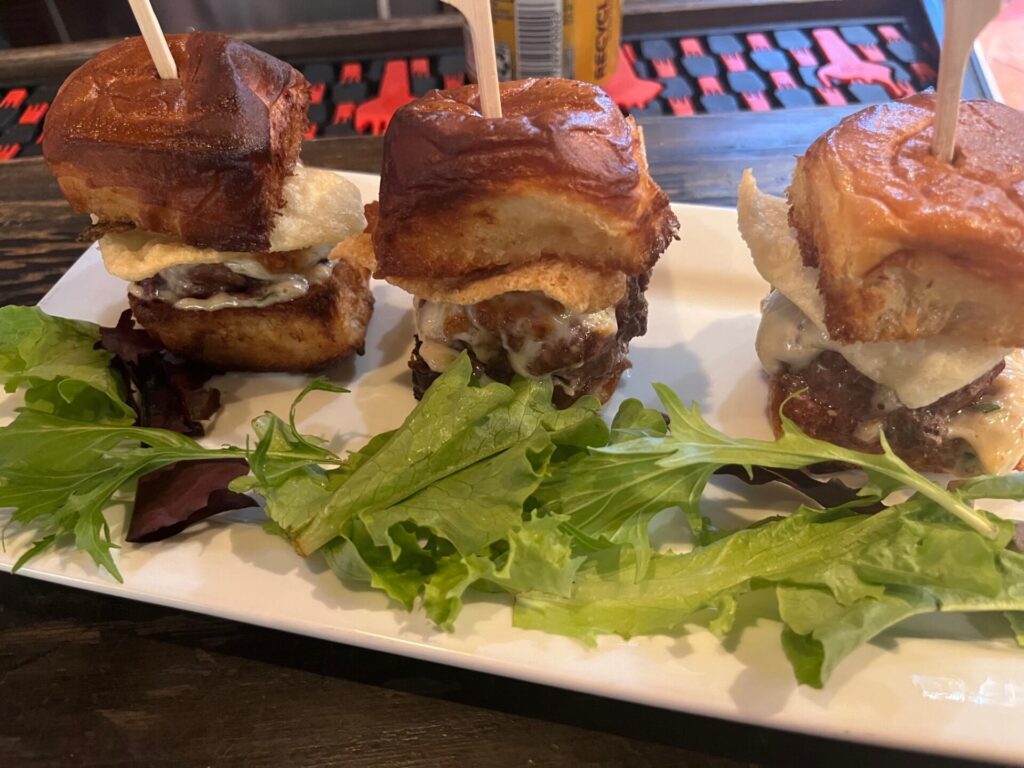
We also devoured burger sliders, three small all-beef patties on toasted Hawaiian sweet buns with secret sauce, mozzarella, and crunchy wonton crisps that elevated the mini burger from standard bar fare to unexpectedly different and delectable.
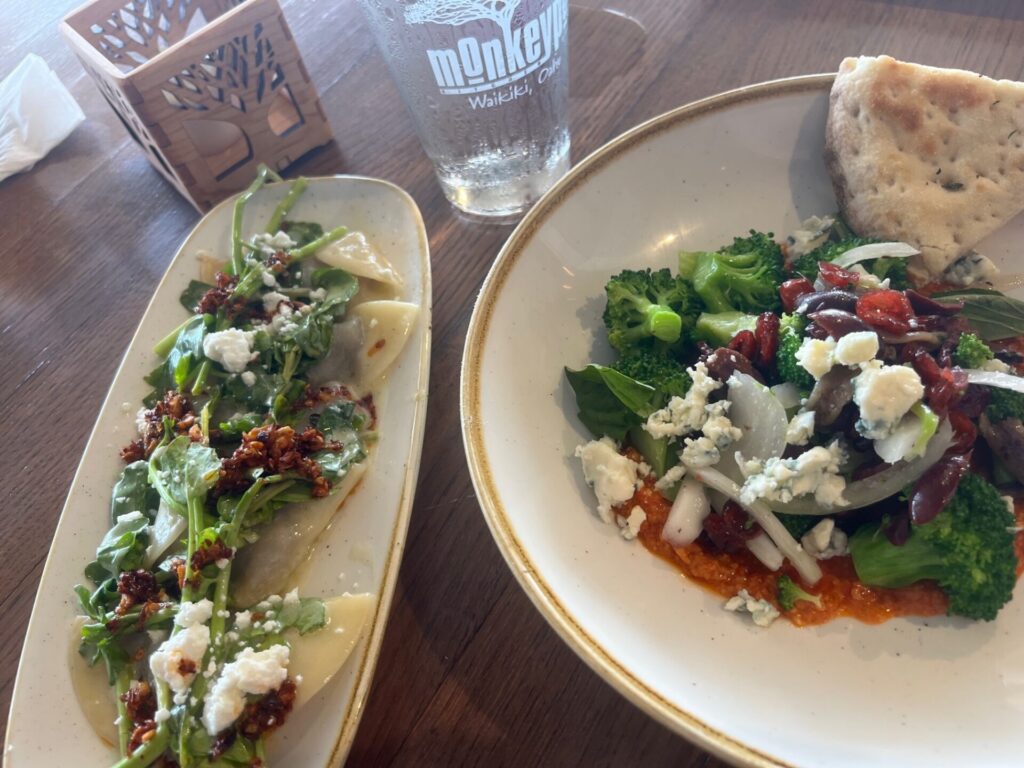
Relatively new restaurant Monkeypod Kitchen by Hawaiian Chef Peter Merriman is thriving in Wakiki and I popped in for lunch. In the mood for something vegetable forward, I opted for taro ravioli. The light combination of waiahole homestead taro, chèvre, and watercress was cool and summary, balanced by the heat and crunch of chili garlic oil. I paired that with the broccoli salad, served over house-made Romesco sauce, with Point Reyes blue cheese, dried cranberries, slivered anchovy, Greek olives, local basil, and a citrusy lemon vinaigrette.

The best part of Monkeypod is the view of the ocean. Sunny or stormy, it’s a mesmerizing backdrop to one of Waikiki’s newest and most delicious dining options. Monkeypod also serves breakfast and has local musicians performing for much of its operating hours.

We are relatively new converts to Stix Asia, a Waikiki Asian food hall directly off Kalakaua Avenue with more than 15 food counters and corners serving everything from Ramen to Udon noodles to stir fries and pad Thai. We strolled through a couple times, browsing options, and popped by for a quick lunch of Korean fried chicken at Good Chicken.

There is one restaurant we will visit every time we are lucky enough to be in Waikiki: Paia Fish Market. I’m addicted to the lunch fish taco plate, served with the restaurant’s famous rough-chopped coleslaw and its incredible grilled potatoes and homemade tarter sauce.

Whenever the rain paused – which wasn’t often, but we did enjoy some moments – we scrambled for sunshine and hit the sidewalks and walkways for sunny strolls. We enjoyed the warmth and the Vitamin D.
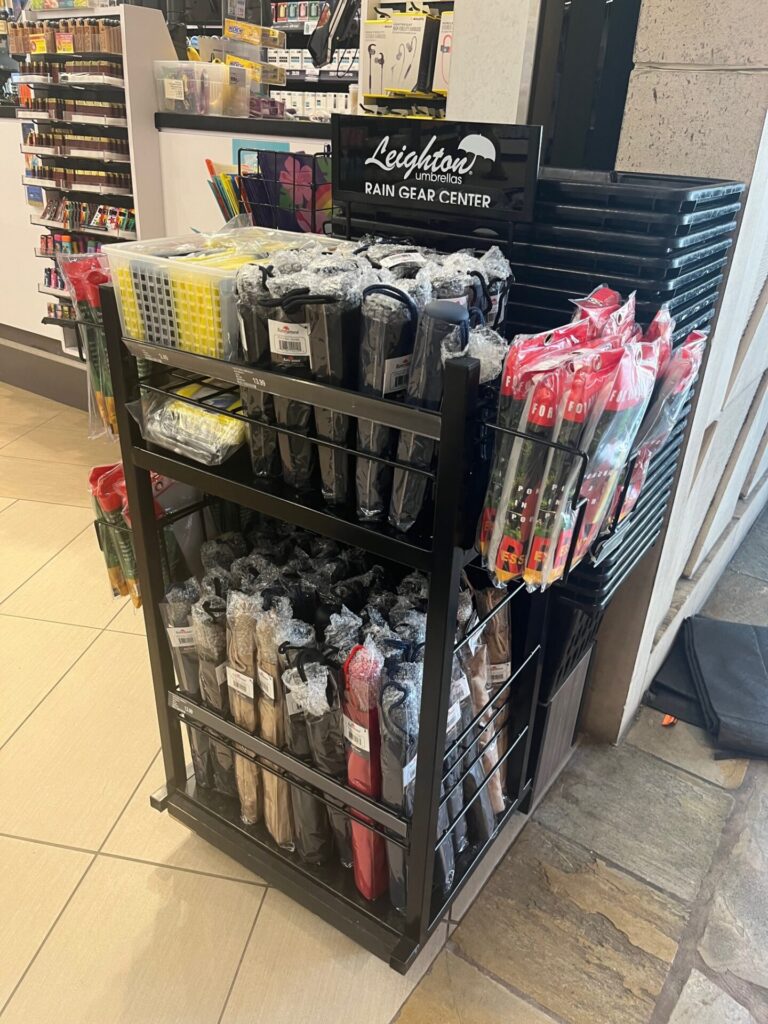
When rain returned, we found ourselves laughing at the splashy chaos, the tourists beneath plastic ponchos, the water gushing down usually-dry stairwells. For the most part, tourists rolled with it, and the locals were more than accommodating, with hotels handing out umbrellas and ABC stores pushing forward displays of raingear instead of sunscreen.

En route to Iolani Palace, my Uber driver and I shared a laugh when a DJ with a sense of humor played Milli Vanilli’s “Blame it on the Rain” as the driver navigated about a foot of flowing water on the roadway.

One particular rainy moment stands out: I was leaving Iolani Palace, debating whether to Uber or walk to Chinatown. The rain had turned, softening into a kind of lacy mist. My guide – a native Hawaiian – smiled as he extended a hand palm-up to sample its texture. He said, “This is Hawaiian snow.”

It was definitely a moment when I was grateful for Hawaiian snow over the Alaska version. Mahalo, Honolulu.
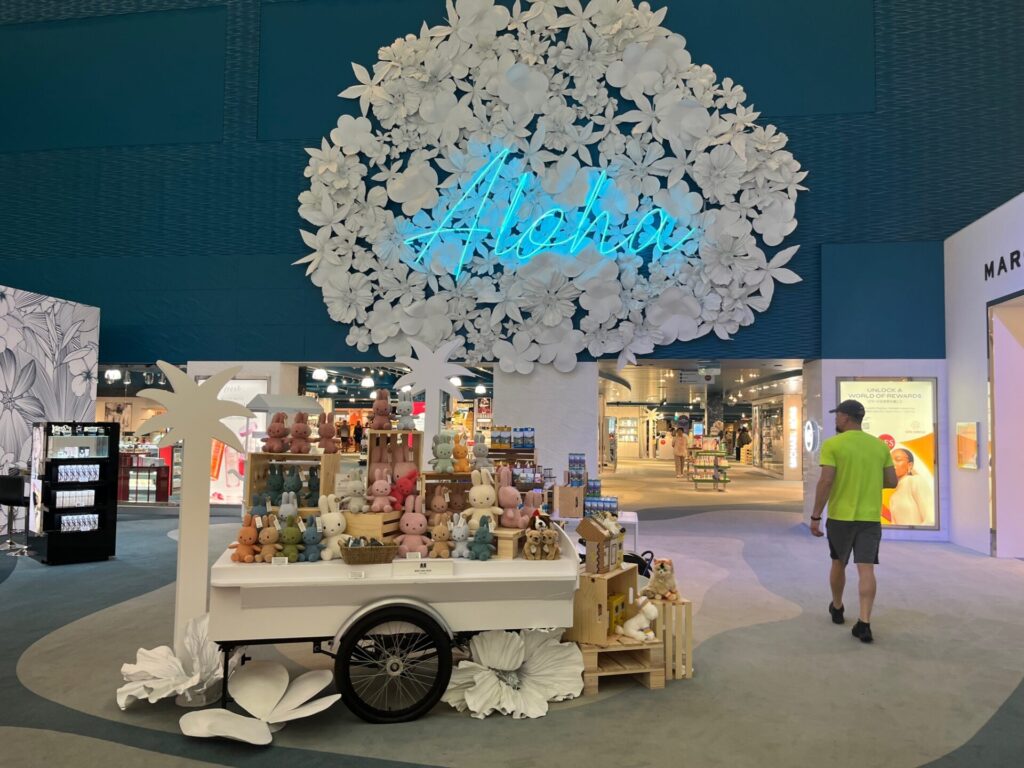
Share this Post


